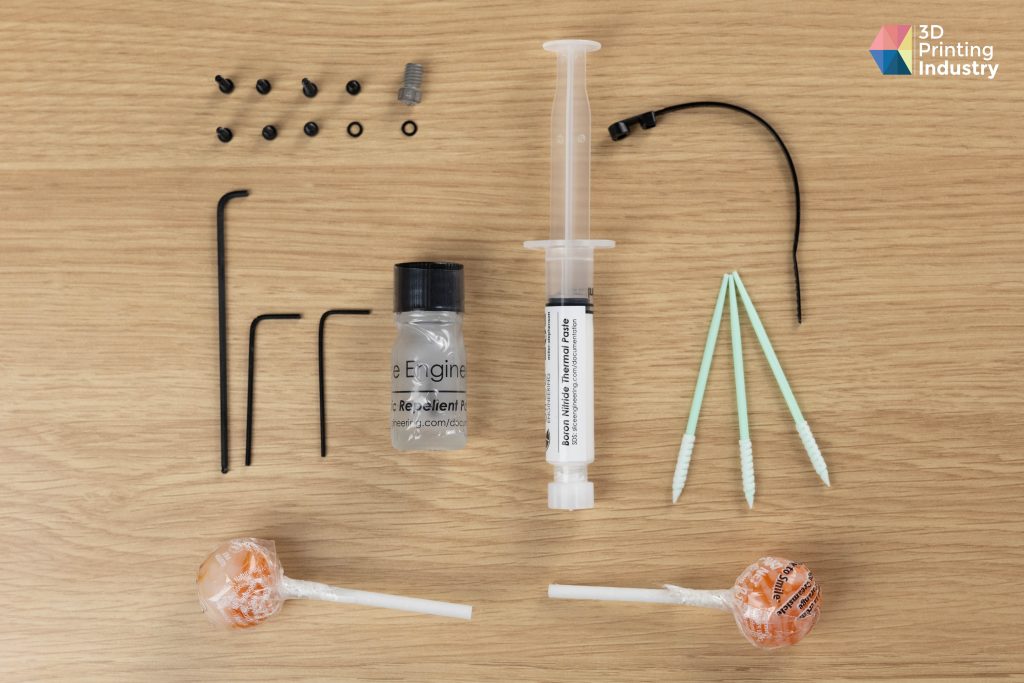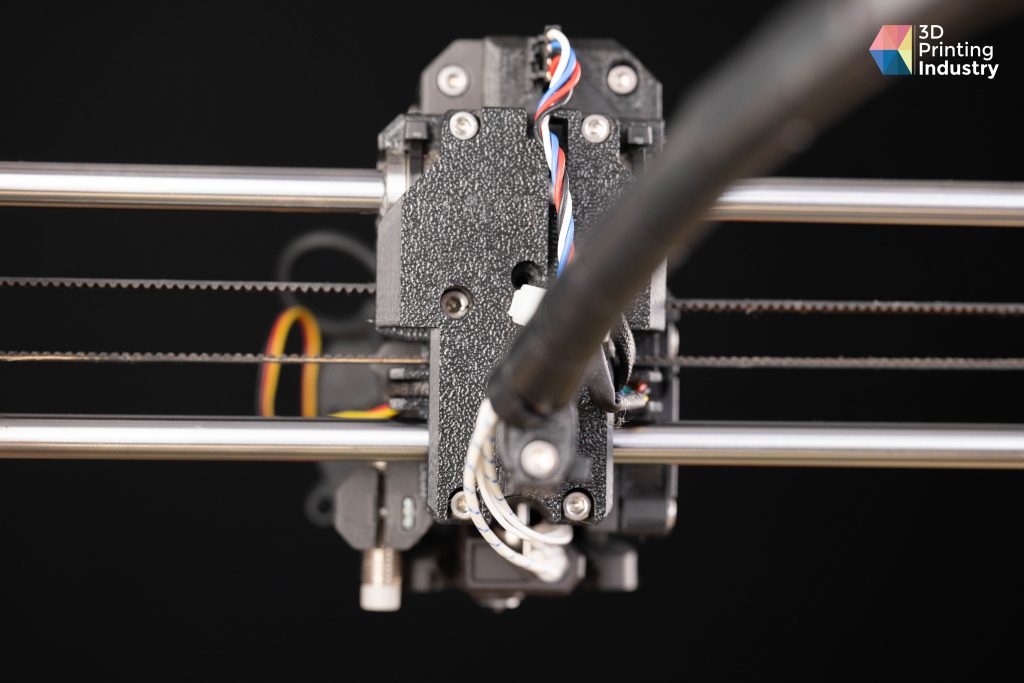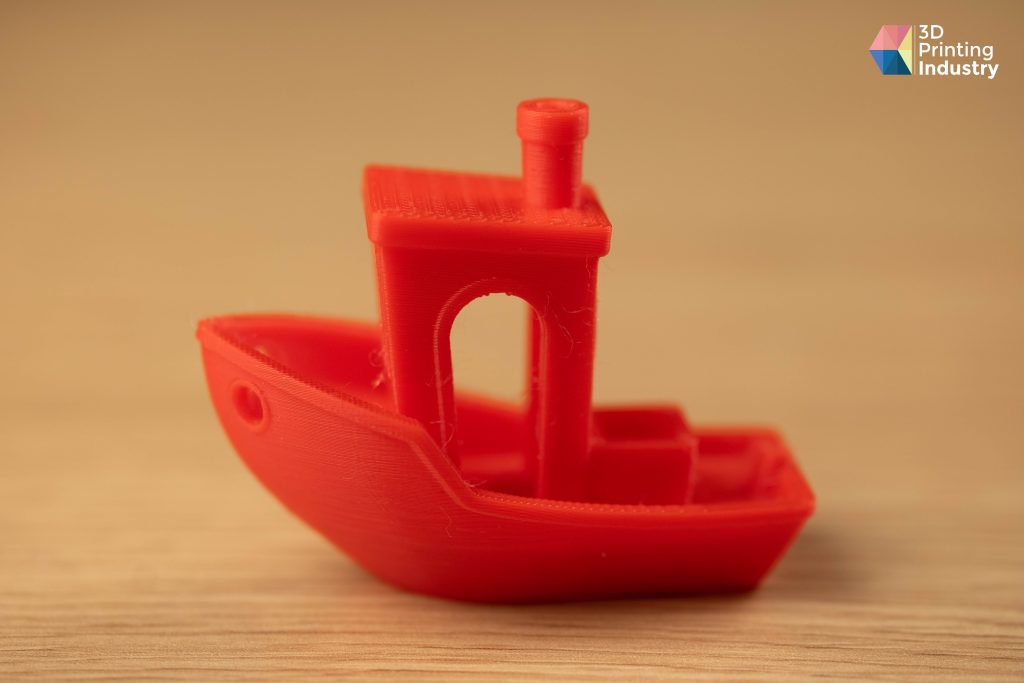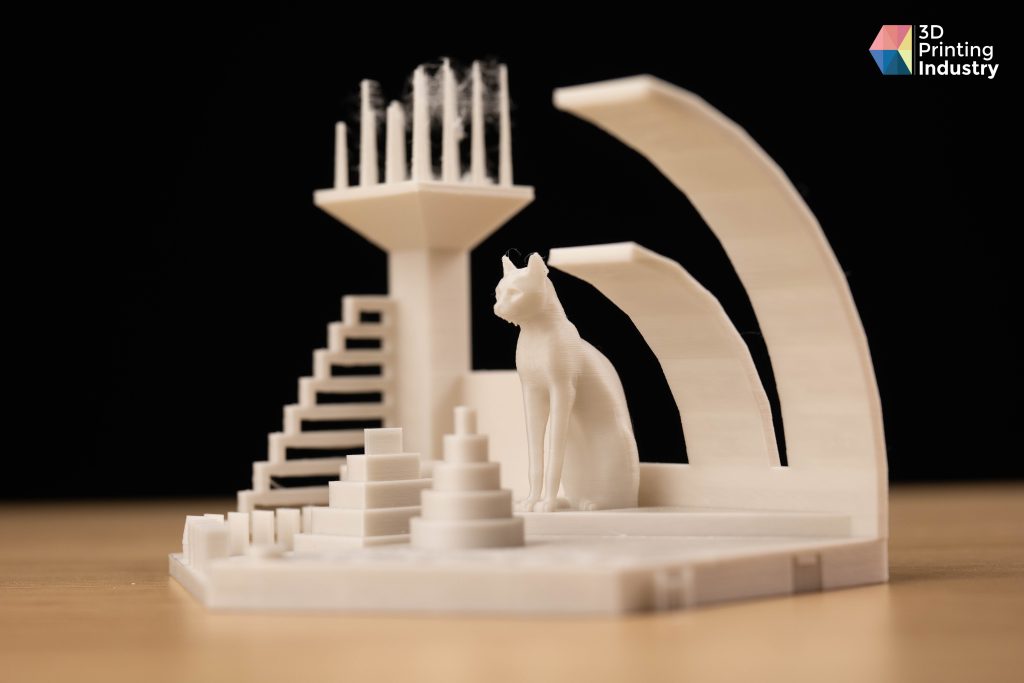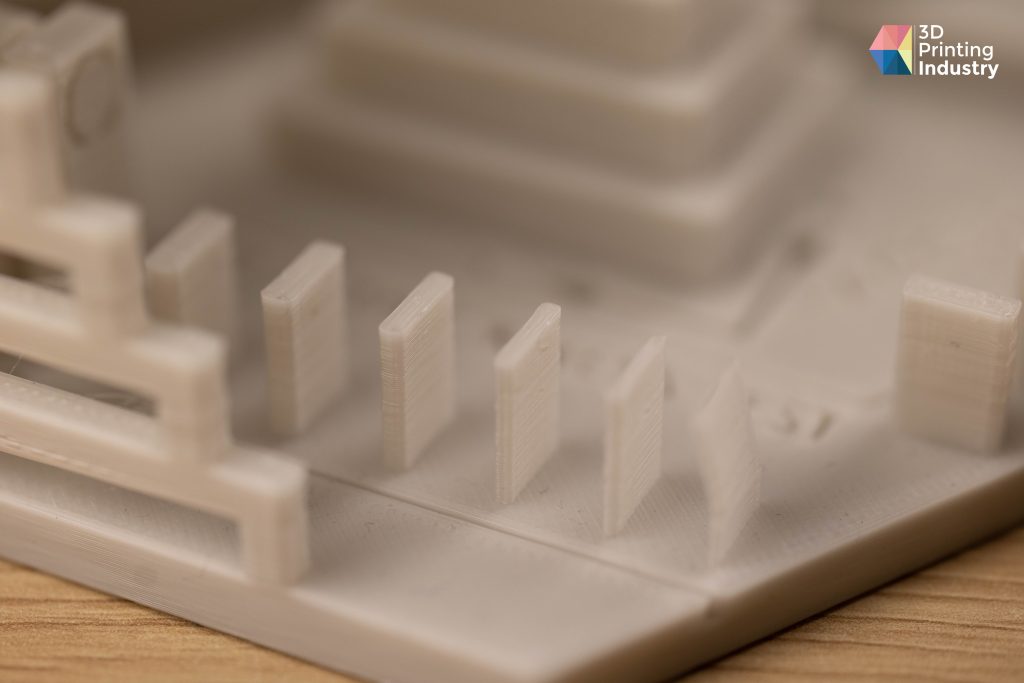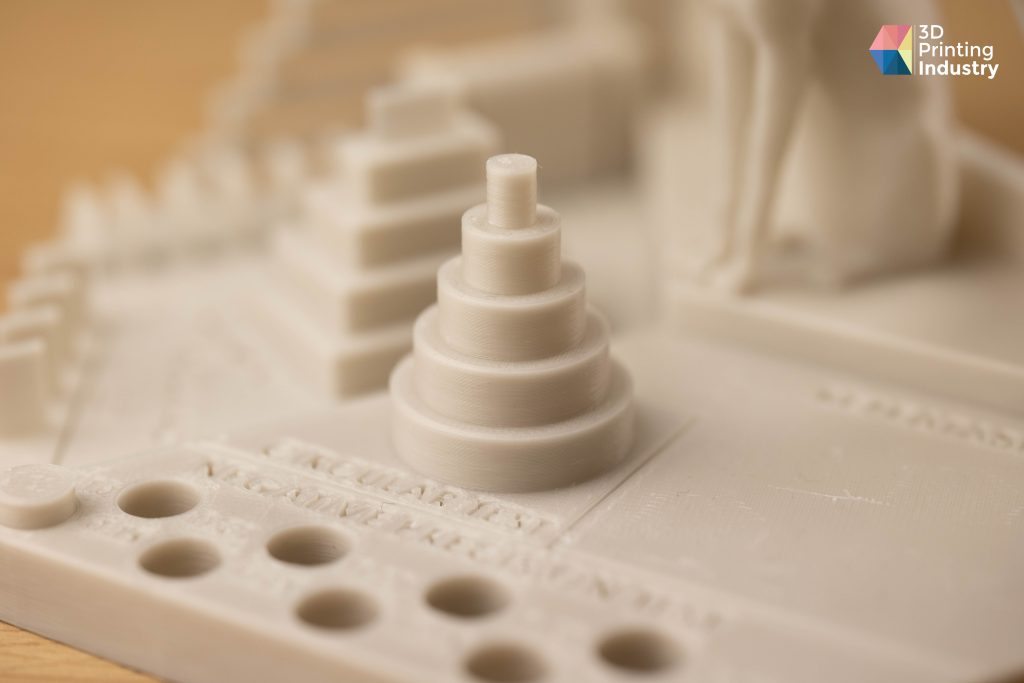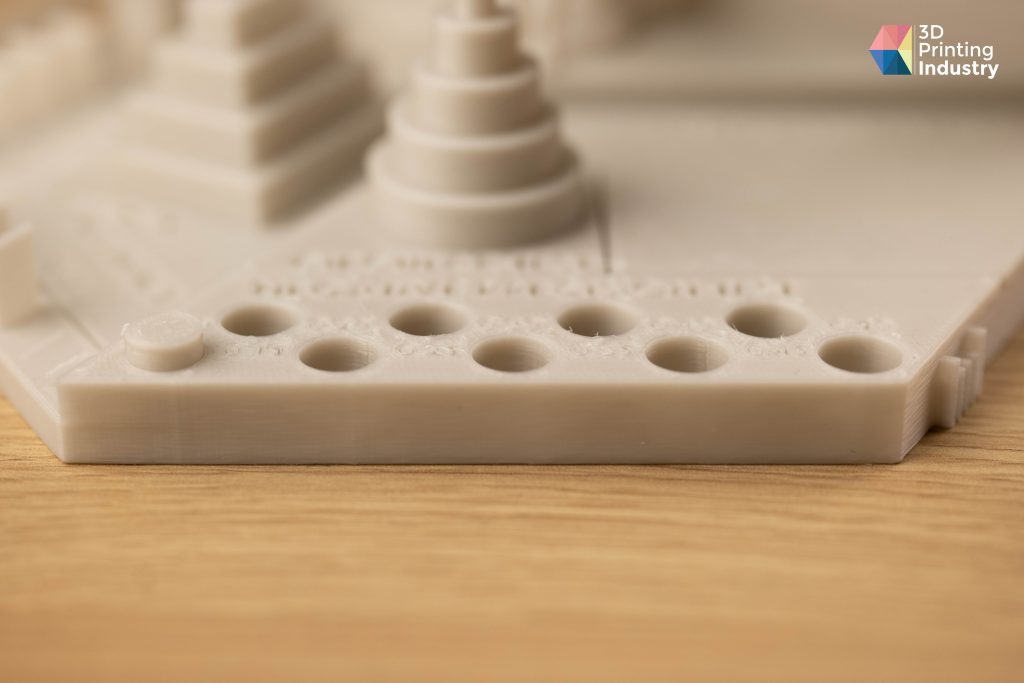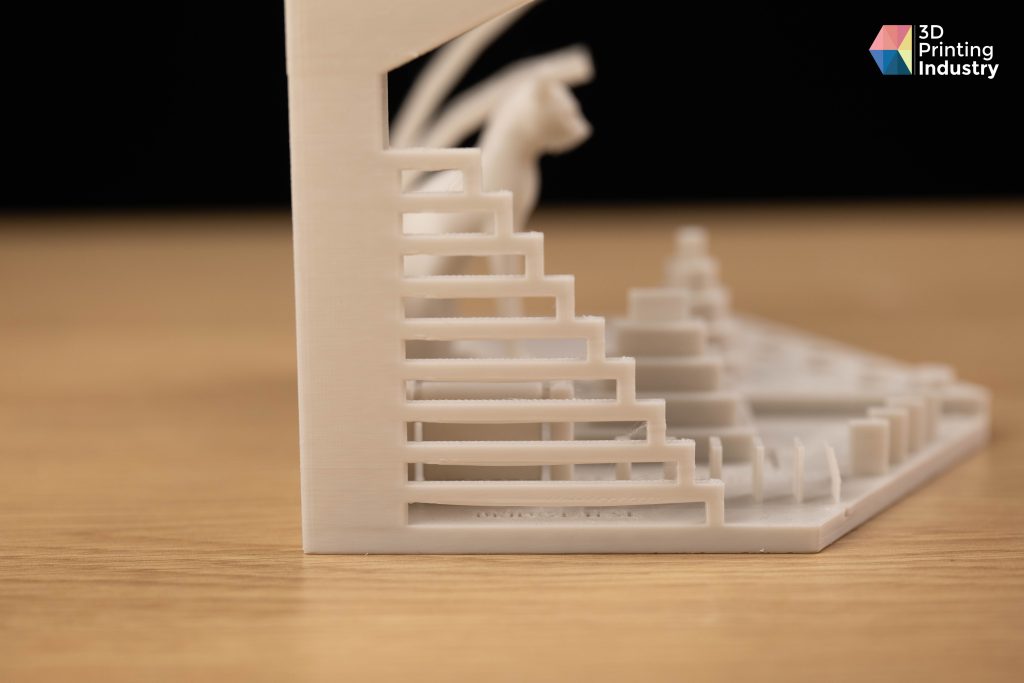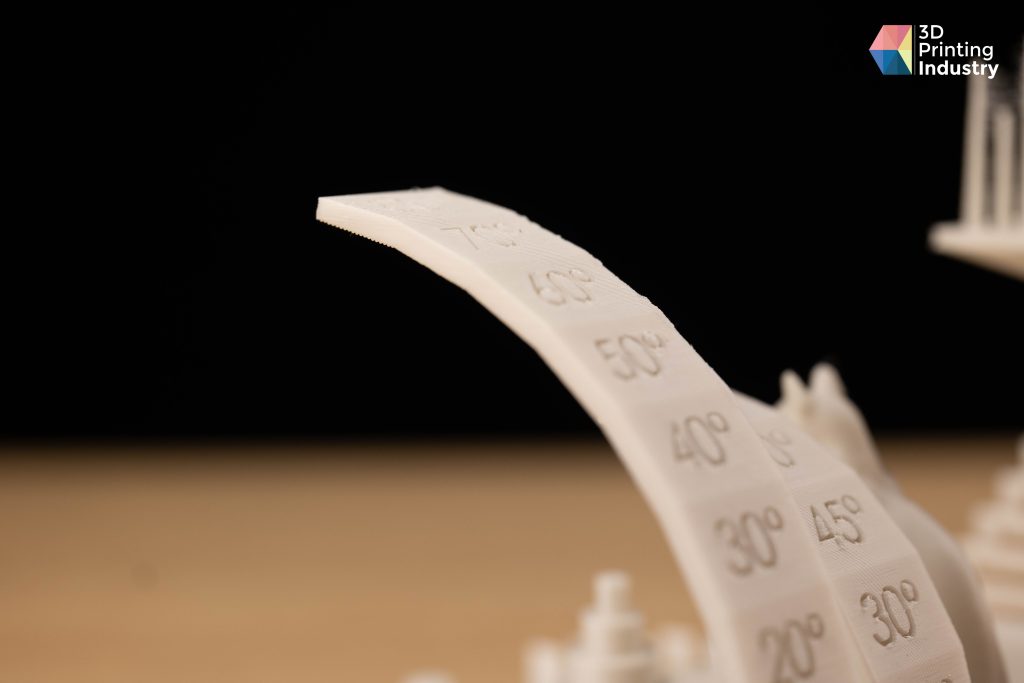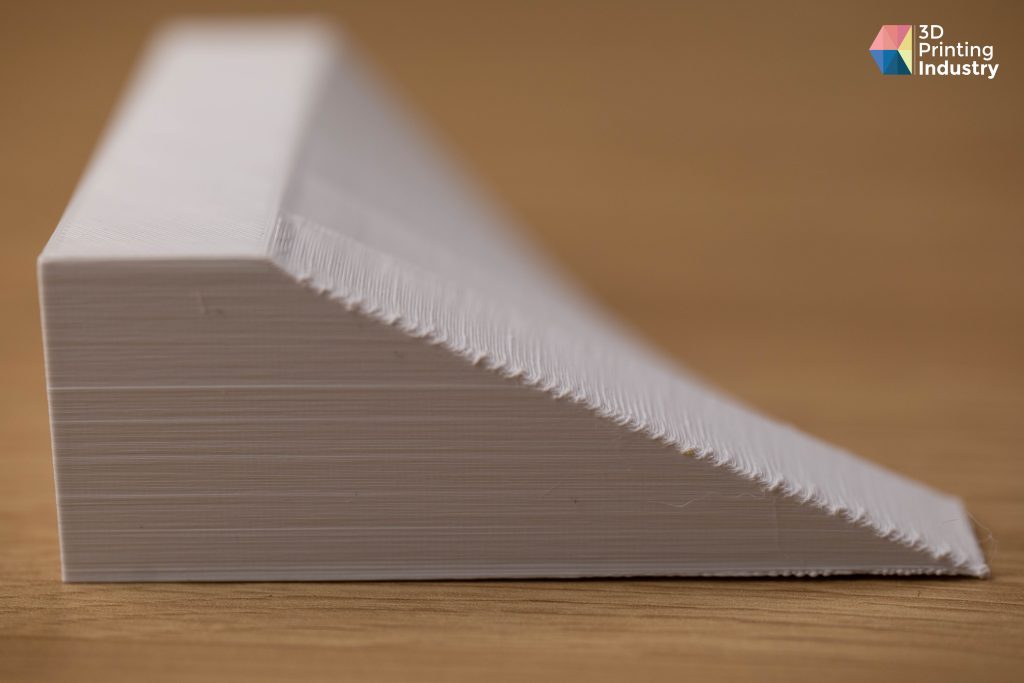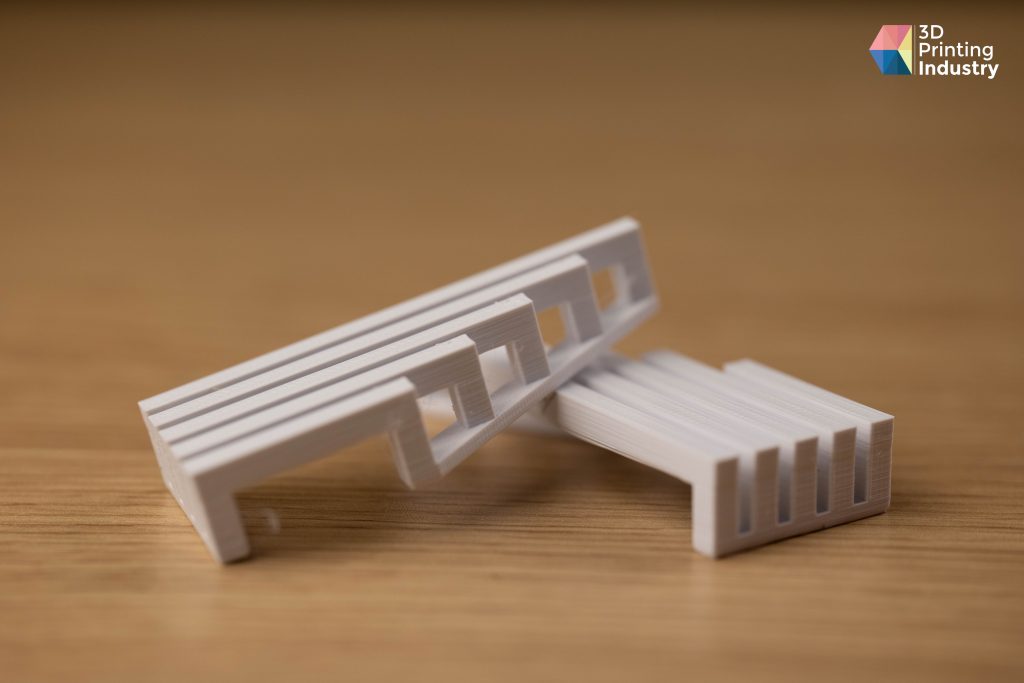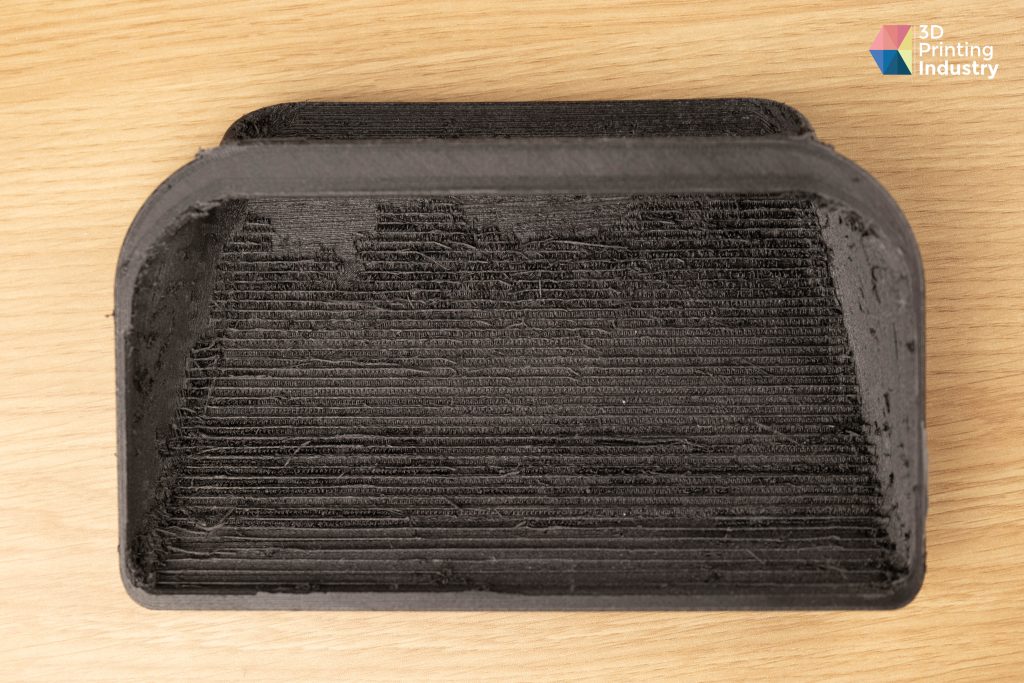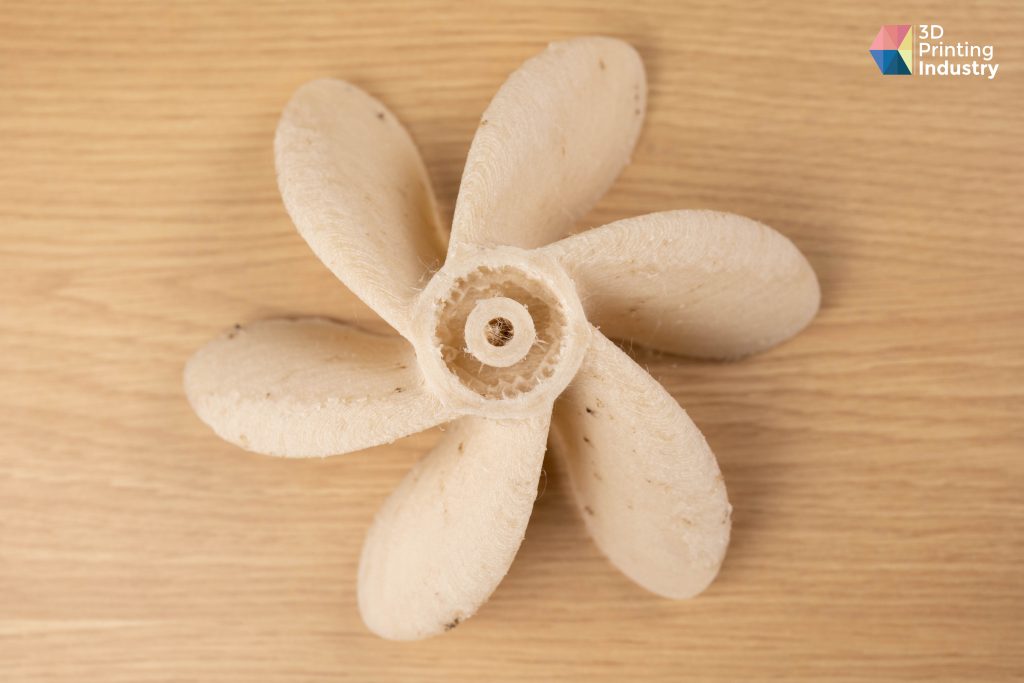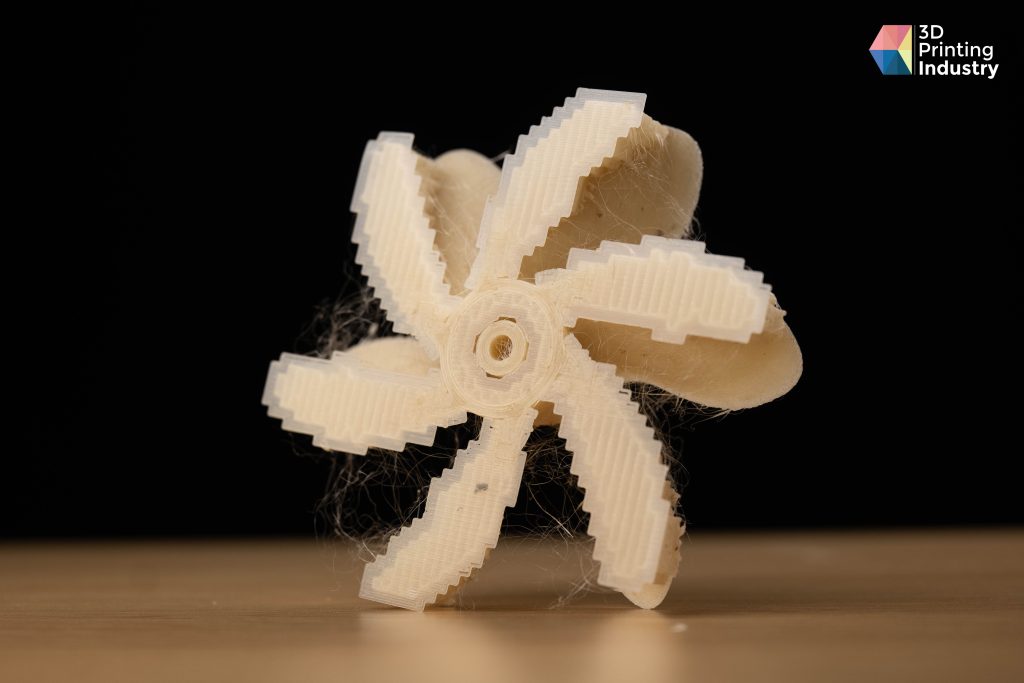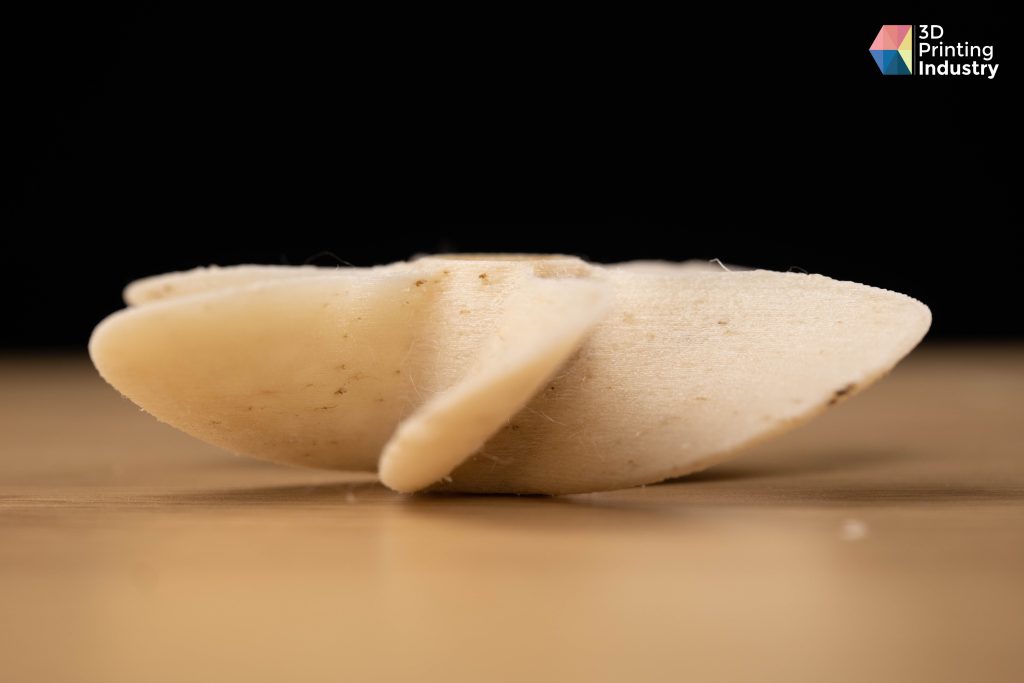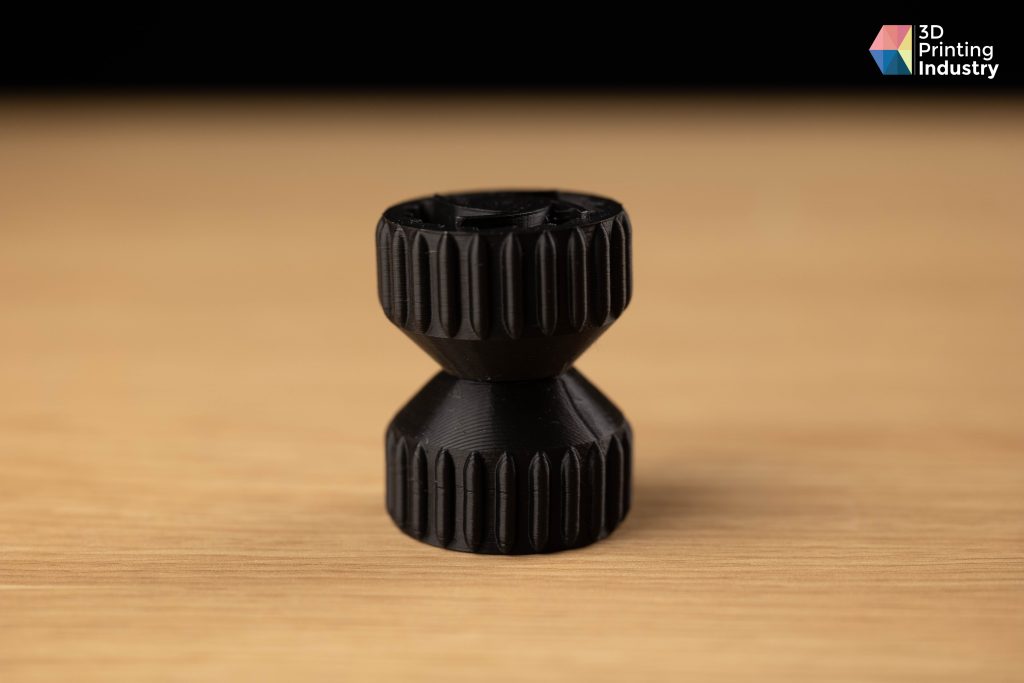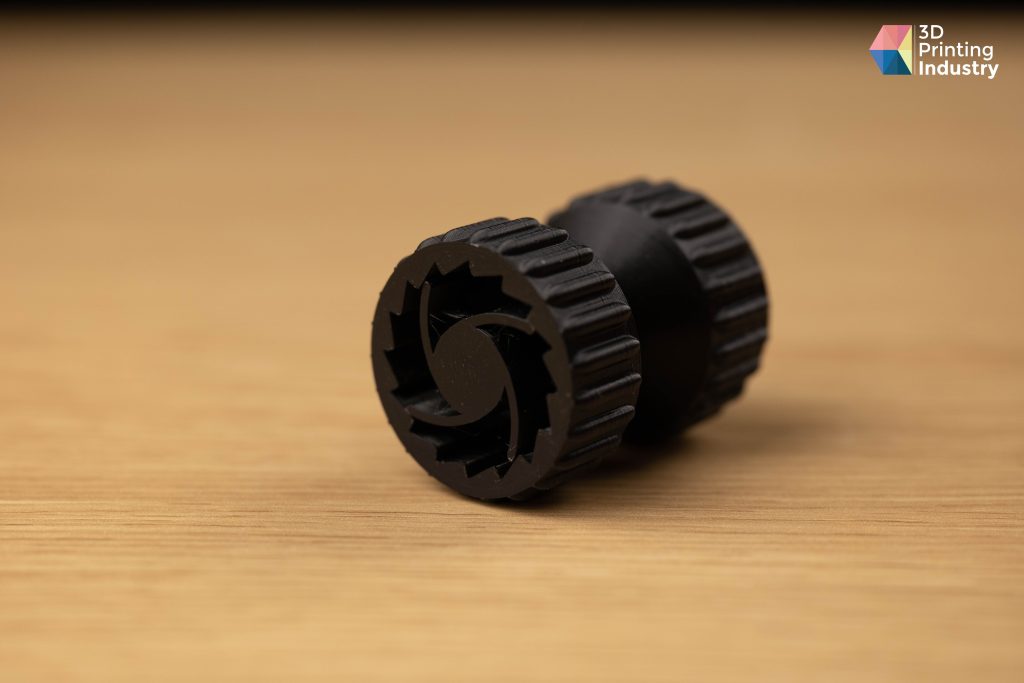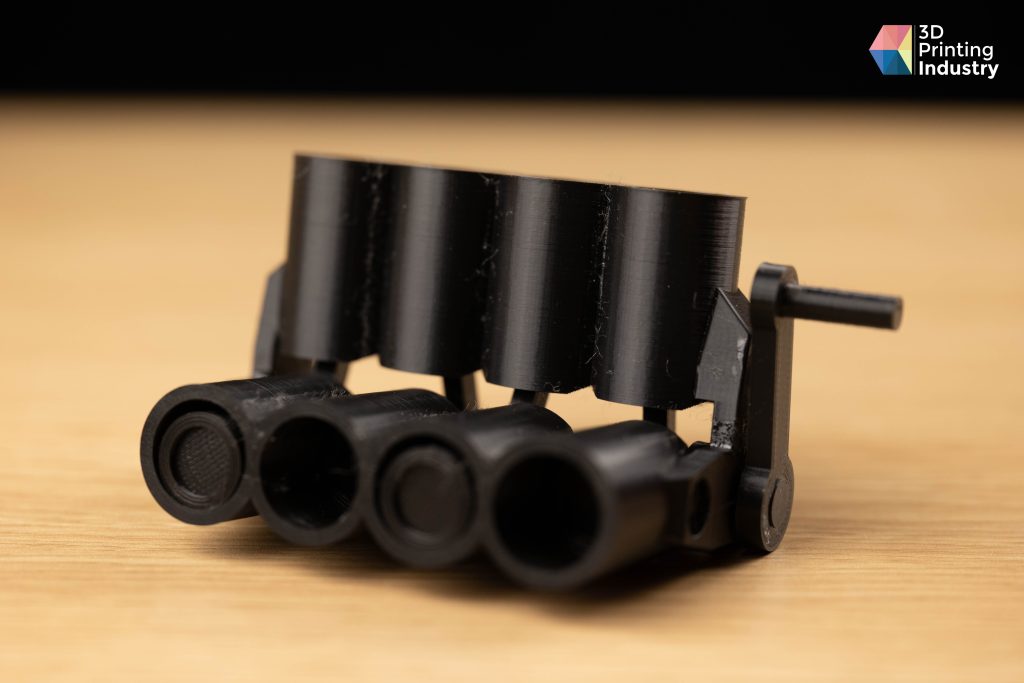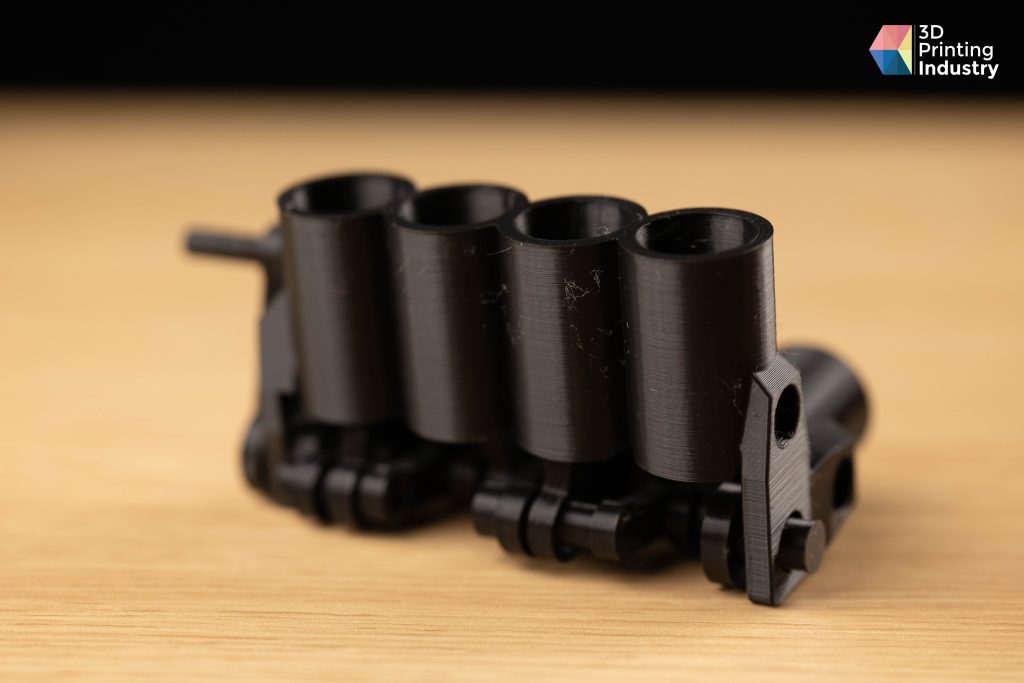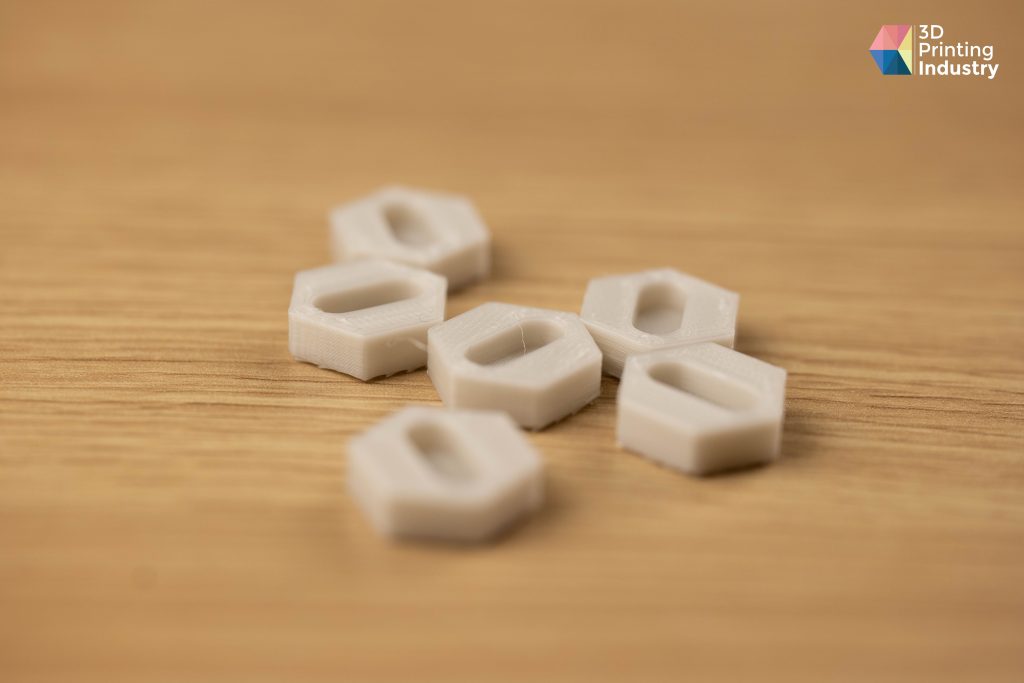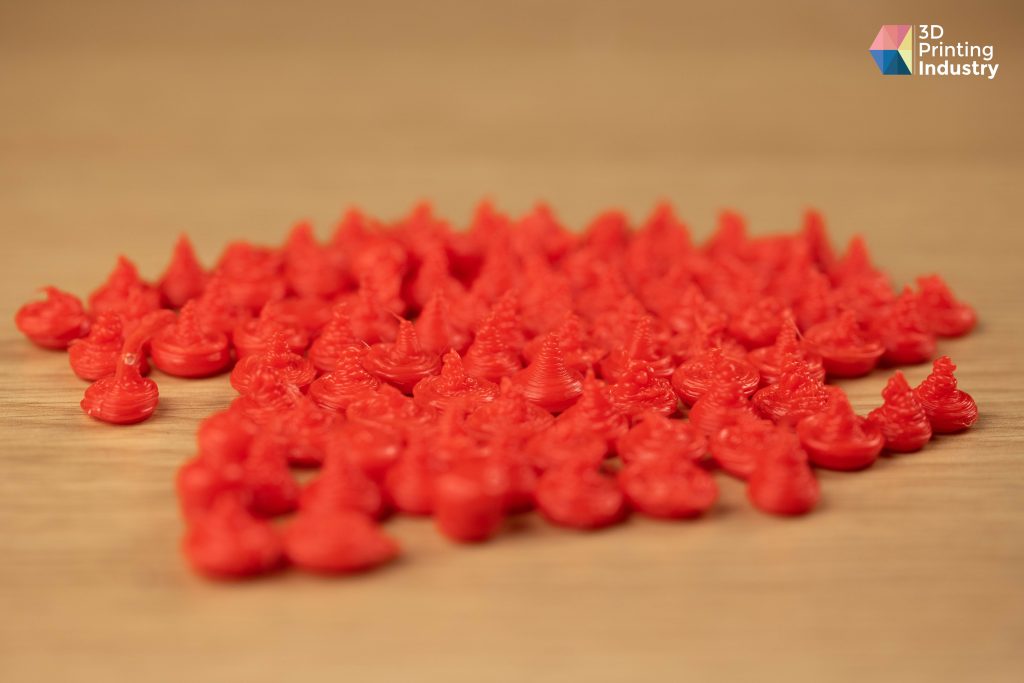3D Printing Industry reviews the Slice Engineering Mosquito hotend.
Florida-based Slice Engineering specializes not in the development of 3D printers, but upgrades designed to boost the performance of existing systems.
To date, the firm has launched a range of hotends, extruders, and nozzles, each of which can be used to enhance the capabilities of popular Fused Filament Fabrication (FFF) machines made by the companies including Prusa Research, Raise3D, and Craftbot.

One of these accessories, the Mosquito hotend, has demonstrated particular potential for 3D printing at high temperatures. As the hotend conducts 85% less heat than standard threaded heat breaks, it’s capable of processing common thermoplastics such as PLA, ABS, HIPS, TPU, and PETG, at temperatures of up to 500°C.
According to Slice Engineering, this Bimetallic Heat Break technology also allows users of the Mosquito hotend to eliminate heat creep, reduce jamming, and improve their 3D printing resolution. To put these bold claims to the test, 3D Printing Industry engineers fitted a Mosquito hotend to a Prusa i3 mk3 system.

Though the kit is designed for the Mk3s+, it can be adapted for use with the Mk3s and Mk3. In fact, we found subjecting the latter, which already comes with high-end parts, to several challenging prints to be an interesting test of its capabilities.
Read on for our full impressions and verdict on the hotend below.

Unpacking the Mosquito hotend
As always with our reviews, we start with an unboxing. The Mosquito hotend arrived very well protected, in a small cardboard box, with parts separated and labeled in small ziplock bags. While our hotend came with an ASA-printed adapter for fitting it to the chassis, Slice Engineering says customers can choose to 3D print one themselves, using the packaged instructions and STL file.
To test how easy this is to do, we chose to create our mount from PA6-CF on a Markforged Mark Two 3D printer. Although it’s possible to produce the mount on a stock Prusa, we took our approach to ensure optimal results, while spending the least time possible on this step.
The unboxing of the Slice Engineering hotend. Photo by 3D Printing Industry.
Elsewhere, the device also came with smaller bags, including boron nitride paste, a BridgeMaster nozzle, Vanadium nozzle, nozzle torque wrench, plastic repellent paint, and tools to create the parts, (plus some on-brand orange lollipops).
In practice, the device is designed to be fitted to a 3D printer’s printhead, which feeds mounted filaments onto a hotend rather than through the printer’s chassis. Once installed, Slice Engineering’s Mosquito is then said to yield improved retraction, material accessibility, and flow rate, as well as reduced heat creep.
Our Mosquito-upgraded Prusa 3D printing nozzle. Photo by 3D Printing Industry.
To assess this for ourselves, we opted to upgrade our Prusa i3 mk3. After some initial trial and error around nozzle assembly, we managed to fit the device, before using the machine’s auto-calibration wizard to tune its nozzle and tweak settings like Z-offset and first layer height – important parameters to ensuring the Mosquito hotend functioned perfectly.
It’s also worth pointing out that some of the issues we encountered around where screws go, were later rectified with a revised kit from Slice Engineering, which arrived with updated installation instructions. Soon, the company also plans to introduce a printer-specific setup guide and hotend print profiles, which should make things easier.

The Mosquito: let’s get benchmarking
We began our benchmarking tests with a classic ‘Benchy,’ a well-known accuracy testing model. Both the samples created on the stock Prusa and our Mosquito-enhanced system came out to a high standard. However, the former did not handle overhangs as well as the latter. Hull overhang and bridging above the windows were noticeably worse, and layer lines were also more visible on the stock Benchy.
Accuracy-wise, the difference between prints produced by the Mosquito hotend and the dimensions of the Benchy’s 3D model turned out to be 0.182 mm. Overall, this is a good (albeit not perfect) result. Ideally, the device would have enabled an average score of less than 0.15mm, but its performance was solid compared to similar previous tests.
Benchys 3D printed a Mosquito-enhanced Prusa i3 mk3. Photo by 3D Printing Industry.
Moving on from Benchy testing, we then deployed the Mosquito hotend to 3D print our 3DPI benchmark, a test designed to stretch machines to their limit, from Diamond PLA. As it turned out, the 3DPI test performed very differently with each hotend.
The Mosquito 3DPI test was much more refined, and it didn’t cause any of the stringing or artifacts left behind by the stock hotend. As a result, the latter scored a three for accuracy, whereas the Mosquito scored a seven. Similar results were seen in the other tests, with the Mosquito hotend performing significantly better.
The Mosquito hotend 3DPI test. Photo by 3D Printing Industry.
Even on acutely-angled overhangs, there was a stark difference between the hotends. With the stock hotend, we managed to achieve overhangs of 30° before inaccuracies occurred, but the Mosquito reached a much more impressive 60°.
That said, the Mosquito hotend’s best results arguably came during negative precision testing, during which it enabled the production of a sample where eight out of nine removable cylinders could be extracted. Not only was this four more than the part made using a stock hotend, but it represented one of our best ever results.
The accuracy section of our 3DPI test. Photo by 3D Printing Industry.
As a matter of fact, our Mosquito-equipped Prusa even outperformed some “industrial” units, providing conclusively that Slice Engineering’s hotend upgrade can handle printing complex materials better than the stock hotend of the Prusa.
Lastly, to test the Mosquito hotend’s much-heralded ability to improve flow rates, we subjected it to flow testing, in which filament was printed at various speeds and temperatures. Results showed that the Mosquito hotend offered better overall flow in normal flow rate conditions, but when extrusion speed was raised to 24-26mm3/s, it seemed like the stock hotend became the better choice.
As a whole, the Mosquito did score better, and it was closer to 100% accuracy for much of the test, but it did slowly drop off at 18mm3/s regardless of the temperature. As such, the two hotends were more closely aligned in this assessment than some of the others, and the Mosquito’s benefits seemed to be less of a leading factor at higher temperatures.
Our Mosquito overhang testing results. Photo by 3D Printing Industry.
Where would I use the Mosquito hotend?
Once we’d established how the Mosquito hotend helps improve print results, we went on to deploy it in the production of parts with potential real-world applications. Through these tests, we 3D printed several prototypes from materials like PLA, ABS, and TPU, with some of the standout prints including a prototype hood scoop for a Nissan Micra made from PA-CF, and a Nylon 6 six-blade propeller.
With our automotive accessory, both hotends produced amicable results. The stock hotend then performed slightly better than the Mosquito in propeller testing, but we believe that with further retraction setting tuning, the latter’s performance would improve.
A prototype hood scoop we 3D printed for a Nissan Micra. Photo by 3D Printing Industry.
It’s also possible that we needed to use the Vanadium nozzle shipped with the Mosquito, as it’s designed for use with abrasive filaments. This nozzle would require hotend temperatures to be increased by 5-10°C to compensate for the lower thermal conductivity of the nozzle substrate (compared to brass or copper), but it would likely improve results.
What we ascertained from these application tests was that the support connection to the nozzle is more volatile on the Mosquito hotend, and will require extra tuning to produce the same result as the stock hotend. However, once users get to grips with Slice Engineering’s device, they should be able to identify use cases that better harness its capabilities.
A 3D printed six-blade propeller prototype. Photo by 3D Printing Industry.
Verdict: an upgrade worth investing in?
So, after all that testing, do we think the Mosquito hotend is worth picking up? If you have prior tinkering experience and a decent 3D printing setup, the device is easy enough to assemble, and the mount should have sufficient quality to ensure there aren’t any hiccups.
Generally, we found Slice Engineering’s hotend to improve accuracy above the stock hotend, particularly in our 3DPI test. With the Benchy, the Mosquito allowed for noticeably better overhangs, and though its accuracy score proved slightly lower than average, this is unlikely to be an issue when printing models, as it was less than half a milimeter out.
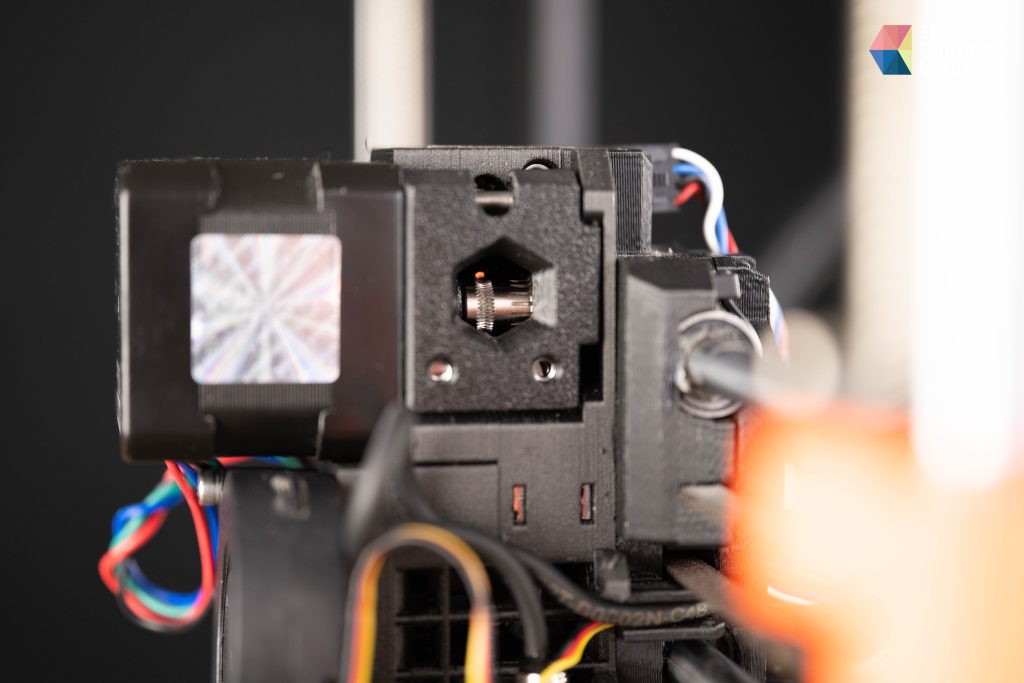
If we were to split hairs, we’d say that supports were hard to remove at times, and installation was tricky due to a lack of instructions. An option to choose part color before they’re sent to the nozzle would also be a nice touch. That said, Slice Engineering has committed to releasing files that address these issues soon, so watch this space.
Given that the Mosquito performed especially well during overhang testing, achieving an overhang on the 3DPI test of 60° without any visible artifacts, we consider to be at the top of its class in this area. Material flow from the device was around 10% better than the stock hotend, making it ideal for anyone looking to reliably print faster on their Prusa.
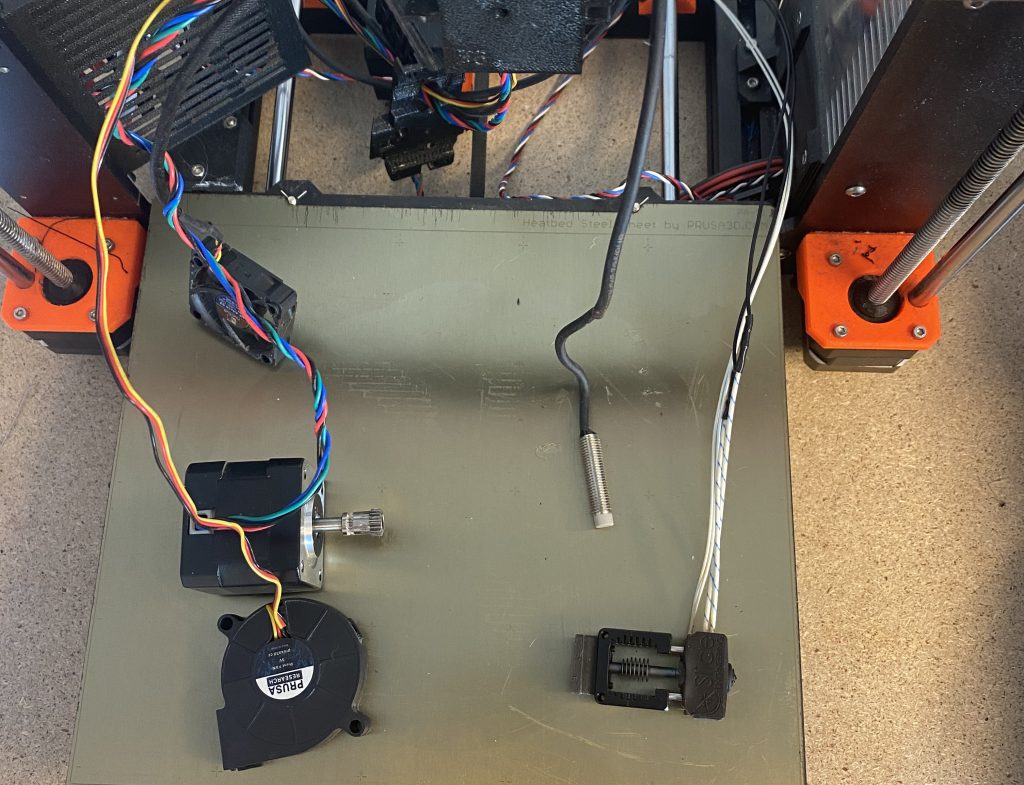
Ultimately, we think the fairest way to score the Mosquito is to judge it against its supposed benefits. When printing at high speeds, our testing showed that the hotend offers users an effective way to improve their accuracy and efficiency. The device also performed significantly better when 3D printing PLA over complex filaments.
As such, current users of the material struggling with heat creep, nozzle clogging, or stringing issues, may find that adopting the Mosquito solves these issues, just as advertised.
A 3DPI Mosquito hotend-3D printed test model. Photo by 3D Printing Industry.
To stay up to date with the latest 3D printing news, don’t forget to subscribe to the 3D Printing Industry newsletter or follow us on Twitter or liking our page on Facebook.
While you’re here, why not subscribe to our Youtube channel? featuring discussion, debriefs, video shorts and webinar replays.
Are you looking for a job in the additive manufacturing industry? Visit 3D Printing Jobs for a selection of roles in the industry.
Featured image shows a Mosquito hotend-equipped Prusa printhead. Photo by 3D Printing Industry.





